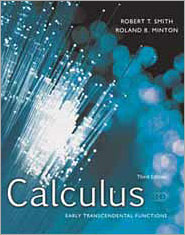 <a onClick="window.open('/olcweb/cgi/pluginpop.cgi?it=jpg::::/sites/dl/free/0073451342/295036/ch10.jpg','popWin', 'width=NaN,height=NaN,resizable,scrollbars');" href="#"><img valign="absmiddle" height="16" width="16" border="0" src="/olcweb/styles/shared/linkicons/image.gif"> (23.0K)</a> <a onClick="window.open('/olcweb/cgi/pluginpop.cgi?it=jpg::::/sites/dl/free/0073451342/295036/ch10.jpg','popWin', 'width=NaN,height=NaN,resizable,scrollbars');" href="#"><img valign="absmiddle" height="16" width="16" border="0" src="/olcweb/styles/shared/linkicons/image.gif"> (23.0K)</a> |
The Bristol Motor Speedway is one of the most popular racetracks on the NASCAR circuit. Races there are considered the most intense of the year, thanks to a combination of high speed, tight quarters and high-energy crowds. With 43 drivers going over 120 miles per hour on a half-mile oval for two and a half hours with 160,000 people cheering them on, the experience is both thrilling and exhausting for all involved.
Auto racing at all levels is a highly technological competition. A Formula One race car seems to have more in common with an airplane than with a standard car. At speeds of 100-200 mph, air resistance forces on the car can reach hurricane levels. The racing engineer's task is to design the car aerodynamically so that these forces help keep the car on the road. The large wings on the back of cars create a downward force that improves the traction of the car. So-called "ground effect" downforces have an even greater impact. Here, the entire underside of the car is shaped like an upside-down airplane wing and air drawn underneath the car generates a tremendous downward force. Such designs are so successful that the downward forces exceed three times the weight of the car. This means that theoretically the car could race upside down!  <a onClick="window.open('/olcweb/cgi/pluginpop.cgi?it=jpg::::/sites/dl/free/0073451342/295036/ch10_twoPics.jpg','popWin', 'width=NaN,height=NaN,resizable,scrollbars');" href="#"><img valign="absmiddle" height="16" width="16" border="0" src="/olcweb/styles/shared/linkicons/image.gif"> (25.0K)</a> <a onClick="window.open('/olcweb/cgi/pluginpop.cgi?it=jpg::::/sites/dl/free/0073451342/295036/ch10_twoPics.jpg','popWin', 'width=NaN,height=NaN,resizable,scrollbars');" href="#"><img valign="absmiddle" height="16" width="16" border="0" src="/olcweb/styles/shared/linkicons/image.gif"> (25.0K)</a>Stock car racers have additional challenges, since intricate rules severely limit the extent to which the cars can be modified. So, how do stock cars safely speed around the Bristol Motor Speedway? The track is an oval only 0.533 mile in length and racers regularly exceed 120 miles per hour, completing a lap in just over 15 seconds. These speeds would be unsafe if the track were not specially designed for high-speed racing. In particular, the Bristol track is steeply banked, with a 16- degree bank on straightaways and a spectacular 36-degree bank in the corners.
As you will see in the exercises in section 10.3, the banking of a road changes the role of gravity. In effect, part of the weight of the car is diverted into a force that helps the car make its turn safely. In this chapter, we introduce vectors and develop the calculations needed to resolve vectors into components. This is a fundamental tool for engineers designing race cars and racetracks.
This chapter represents a crossroads from the primarily two-dimensional world of first-year calculus to the three-dimensional world of many important scientific and engineering problems. The rest of the calculus we develop in this book builds directly on the basic ideas developed here. |





